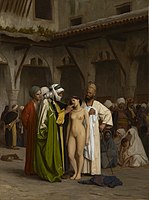Naked News is a Canadian news and entertainment program owned by Naked Broadcasting Network. It features nude female news presenters reading news bulletins derived from news wires. The show's production studio is located in Toronto. There are six daily news programs a week and they are approximately 22 minutes long. The female cast members either read the news fully nude, or disrobe as they present their various segments, including entertainment, sports, movies, food, sex and relationships. Naked News TV! is an offshoot of the web program and is broadcast on pay TV in various countries around the world.

Indecent exposure is an expression that describes the deliberate public exposure by a person of a portion of their body in a manner contrary to local standards of appropriate behavior. Laws and social attitudes regarding indecent exposure vary significantly in different countries. It ranges from outright prohibition to prohibition of exposure of certain body parts, such as the genital area, buttocks or breasts.

A stripper or exotic dancer is a person whose occupation involves performing striptease in a public adult entertainment venue such as a strip club. At times, a stripper may be hired to perform at a bachelor party or other private event.
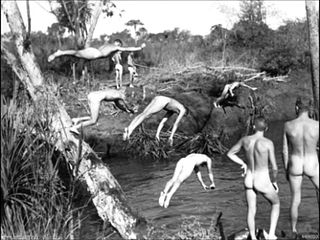
Nude swimming, or skinny dipping, is the practice of swimming or bathing naked, whether in natural bodies of water or in swimming pools.
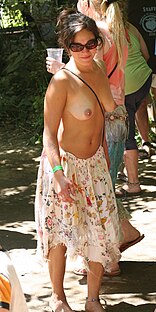
Toplessness refers to the state in which a woman's breasts, including her areola and nipples, are exposed, especially in a public place or in a visual medium. The male equivalent is barechestedness, also commonly called shirtlessness.

Naked yoga is the practice of yoga without clothes. It has existed since ancient times as a spiritual practice, and is mentioned in the 7th-10th century Bhagavata Purana and by the Ancient Greek geographer Strabo.

Nudity in film is the presentation in a film of at least one person who is fully or partly nude, showing one or more bare genitals, breast or buttocks. In some films, nudity may be suggestive or implied, such as when a person seemingly naked is covered by a sheet, while in others it is explicit. Since the development of the medium, depiction in films of any form of sexuality has been controversial, and in the case of most nude scenes has had to be justified as being part of the story, in the concept of "artistically justifiable nudity", though some films contain "gratuitous nudity". Many actors and actresses have appeared nude, or exposing parts of their bodies or dressed in ways considered provocative by contemporary standards at some point in their careers.

Clothed female, naked male (CFNM) is a genre of nudity based on the real or imagined interaction of one or more nude men and one or more clothed women.

Depictions of nudity include visual representations of nudity throughout history, in disciplines including the arts and sciences. Nudity is restricted in most societies, but some depictions of nudity may serve a recognized social function. Clothing also serves as a significant part of interpersonal communication, and a lack of clothing in public is expected to have a social context. In Western societies, the three contexts that are easily recognized by a majority of individuals are art, pornography, and information or science. Any image not easily fitting into one of these categories may be misinterpreted, leading to disputes.
Nudity in American television is a controversial topic. Aside from a few exceptions, nudity in the United States has traditionally not been shown on terrestrial television. On the other hand, cable television has been much less constrained as far as nudity is concerned.

The history of nudity involves social attitudes to nakedness of the human body in different cultures in history. The use of clothing to cover the body is one of the changes that mark the end of the Neolithic, and the beginning of civilizations. Nudity has traditionally been the social norm for both men and women in some hunter-gatherer cultures in warm climates and it is still common among many indigenous peoples. The need to cover the body is associated with human migration out of the tropics into climates where clothes were needed as protection from sun, heat, and dust in the Middle East; or from cold and rain in Europe and Asia. The first use of animal skins and cloth may have been as adornment, along with body modification, body painting, and jewelry, invented first for other purposes, such as magic, decoration, cult, or prestige. The skills used in their making were later found to be practical as well.

Nude photography is the creation of any photograph which contains an image of a nude or semi-nude person, or an image suggestive of nudity. Nude photography is undertaken for a variety of purposes, including educational uses, commercial applications and artistic creations. The exhibition or publication of nude photographs may be controversial, more so in some cultures or countries than in others, and especially if the subject is a minor.

The nude, as a form of visual art that focuses on the unclothed human figure, is an enduring tradition in Western art. It was a preoccupation of Ancient Greek art, and after a semi-dormant period in the Middle Ages returned to a central position with the Renaissance. Unclothed figures often also play a part in other types of art, such as history painting, including allegorical and religious art, portraiture, or the decorative arts. From prehistory to the earliest civilizations, nude female figures are generally understood to be symbols of fertility or well-being.
Gymnophobia is a fear (phobia) of nudity.
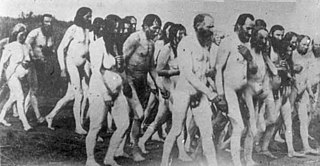
Nudity is sometimes used as a tactic during a protest to attract media and public attention to a cause, and sometimes promotion of public nudity is itself the objective of a nude protest. The use of the tactic goes back to well published photos of nude protests by svobodniki in Canada in 1903. The tactic has been used by other groups later in the century, especially after the 1960s. Like public nudity in general, the cultural and legal acceptance of nudity as a tactic in protest also varies around the world. Some opponents of any public nudity claim that it is indecent, especially when it can be viewed by children; while others argue that it is a legitimate form of expression covered by the right to free speech.

Nudity is the state of being in which a human is without clothing or specifically not covering the genitals. Partial nudity may be defined as not covering other parts of the body deemed sexual. Nudity is culturally complex due to meanings given various states of undress in differing social situations. In any particular society, these meanings are defined in relation to being properly dressed, not in relation to the specific body parts being exposed. Nakedness and clothing are connected to many cultural categories such as identity, privacy, social status and moral behavior. Although often used interchangeably, "naked" and "nude" are also used in English to distinguish between the various meanings of being unclothed.
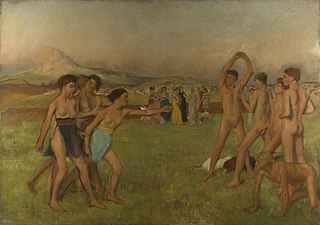
This Timeline of social nudity shows the varying degrees of acceptance given to the naked human body by diverse cultures throughout history. The events listed here demonstrate how various societies have shifted between strict and lax clothing standards, how nudity has played a part in social movements and protest, and how the nude human body is accepted in the public sphere.
The legal status of striptease varies considerably among different countries and the various jurisdictions of the United States. Striptease is considered a form of public nudity and subject to changing legal and cultural attitudes on moral and decency grounds. Some countries do not have any restrictions on performances of striptease. In some countries, public nudity is outlawed directly, while in other countries it may be suppressed or regulated indirectly through devices such as restrictions on venues through planning laws, or licensing regulations, or liquor licensing and other restrictions.
Michael Stokes is an American photographer, best known for his photographs of veterans who were wounded in Iraq and Afghanistan and male figure photographs. He has published several coffee table books of his fine art nude photography and from his large collection of vintage photographs.

La Vérité sortant du puits armée de son martinet pour châtier l'humanité is an 1896 painting by the French artist Jean-Léon Gérôme.



